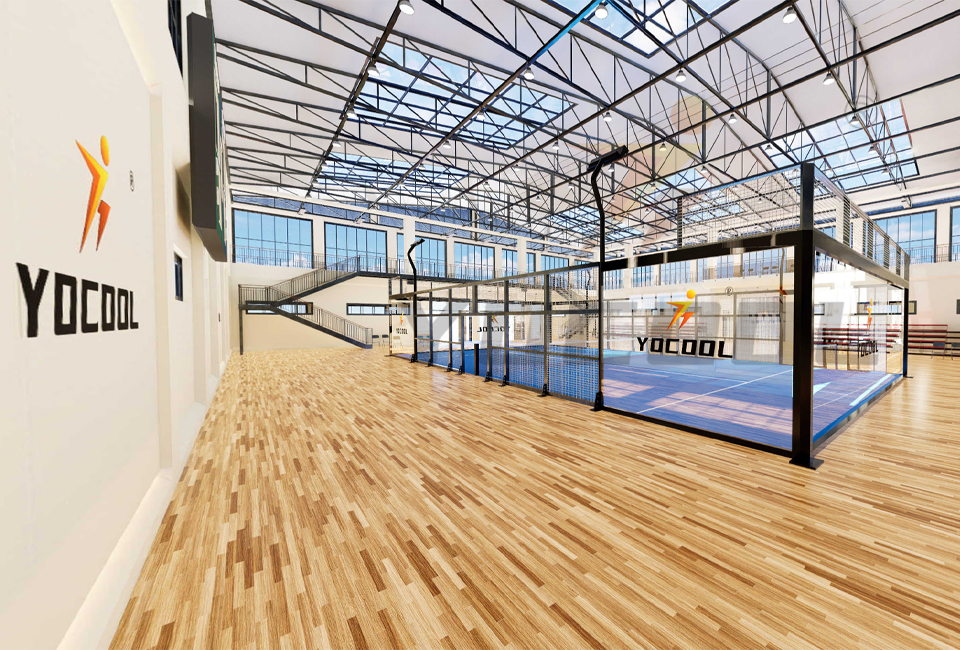

The Evolution and Importance of Squash Courts
The sport of squash has carved its niche in the world of racquet sports, celebrated for its intensity, quick reflexes, and the physical prowess it demands from its players. At the heart of this exhilarating game lies the squash court, a specially designed area that not only defines the game’s structure but also influences the player's performance and experience. In this article, we will explore the characteristics, significance, and evolution of squash courts.
The Structure of a Squash Court
A standard squash court is an enclosed, four-walled space, measuring 9.75 meters wide and 4.57 meters high. The front wall is the focal point where players execute their shots, but the side and back walls are equally critical, as they can be used tactically to place the ball in difficult positions for opponents. The floor is typically made of wood, providing a stable and resilient surface that allows for fast movement and quick directional changes.
The markings on the court are crucial for gameplay. The service boxes, outline of the three lines, and the tin at the bottom of the front wall all serve specific purposes. Players need to serve the ball from within the service boxes into the opposite quarter of the court, and failing to hit above the tin results in a loss of the rally. Such rules not only define the gameplay but also add strategic depth, requiring players to have keen tactical awareness.
The Importance of Quality Courts
The quality of a squash court significantly influences the game. Professional-grade courts are built with precise dimensions and high-quality materials, ensuring that the ball rebounds predictably and evenly. The lighting within the court also plays a vital role; proper illumination is essential as it allows players to track the fast-moving ball accurately.
Moreover, temperature and humidity control within indoor squash facilities are critical factors affecting performance. Players need optimal conditions to achieve their peak physical capacities. Courts that maintain a comfortable playing environment not only enhance player performance but also attract more enthusiasts to the sport.

The Evolution of Squash Courts
Historically, squash originated in the early 19th century in England, with makeshift courts usually built in cramped areas of existing buildings. As the sport gained popularity, the design and construction of squash courts evolved. Modern courts are now built considering the best practices in sports architecture, often featuring additional amenities for players and spectators alike.
Technology has also had an impact on the evolution of squash courts. Innovations such as advanced flooring systems, LED lighting, and enhanced wall materials have helped improve the playing experience. Smart courts equipped with sensors that track the ball’s speed and trajectory, as well as player performance metrics, are becoming common in elite training and competition venues.
The Role of Squash Courts in Community and Competition
Squash courts do not only serve professional players; they are pivotal in promoting grassroots engagement in the sport. Many local clubs and fitness centers have dedicated squash courts that foster a community spirit. They provide an avenue for socialization and physical fitness, encouraging individuals of all ages to pick up a racquet and partake in this thrilling sport.
In competitive environments, the design of squash courts can greatly impact the outcome of tournaments. The most prestigious tournaments, such as the PSA World Championships and the British Open, are held in specially designed courts that meet international standards. These venues offer not just competition but also a spectacle for fans, showcasing the very best of the sport.
Conclusion
In conclusion, squash courts are much more than mere playing surfaces; they are integral to the identity and culture of squash as a sport. The evolution from rudimentary structures to sophisticated modern courts reflects the growth of the game and its increasing popularity worldwide. Quality courts enhance player performance, promote community engagement, and create thrilling environments for competition. As squash continues to grow, the importance of well-designed courts will only become more paramount in shaping the future of the sport. Whether you are a seasoned player or a novice, stepping onto a squash court offers an opportunity to experience one of the most exciting sports in the world.
High-Performance Industrial Flooring Solutions China Paddle Tennis Court for Sale
High-Performance Industrial Flooring Solutions Durable & Cost-Effective
Homogeneous Transparent Floor – Durable & Stylish Rubber Floor Solutions
Premium Homogeneous Transparent Floor for Durable & Stylish Spaces Rubber Floor Solutions
Premium Sports Floor Solutions Durable PVC Sports Floor & Rubber Floor for Gyms
Durable Rubber Composite Floor Premium Rubber Floor & Mats Solutions